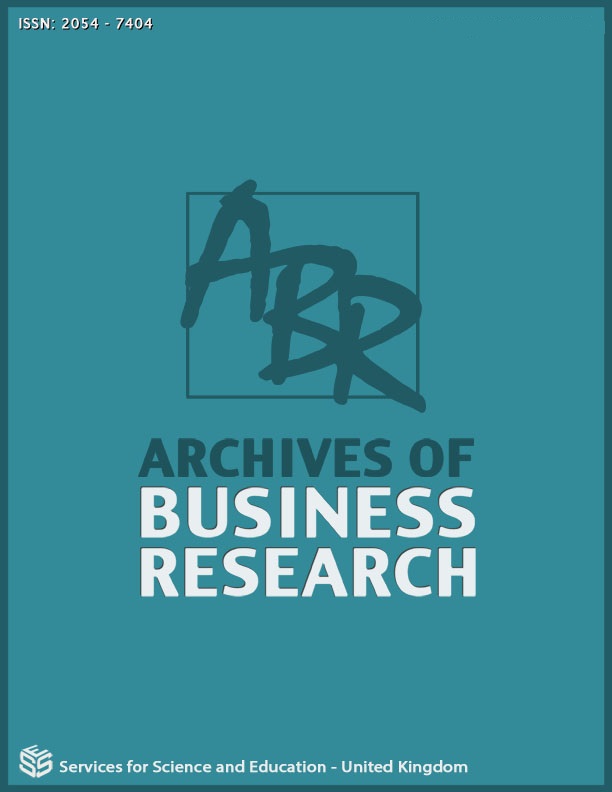The Macroeconomics of Fiscal Policy Behavior in Liberia: An Error Correction Methodology
DOI:
https://doi.org/10.14738/abr.102.11709Abstract
The debate of the size of government and economic growth has been popular especially in Africa. This study examined the relationship between fiscal variables, inflation and economic growth in Liberia. The Vector Error Correction Model (VECM) is employed. Results from the Impulse Response Function (IRF) analysis reveal that the response of inflation to growth in the Liberian economy over the study period, was weak, though significant and negative in the short run. However, it became positive and normalized in the medium and long runs. This means that inflation retarded growth only in the short run which is consistent with Barro (1996) empirical findings that inflation impact growth negatively and significantly. Also observed is the relationship between government expenditure and economic growth. For the Liberian economy and despite the interruption of the war, government expenditure impact on growth is a short run positive event, In medium to long run, it has a negative effect. This means that government expenditure only spur growth in the short run slightly but did not bring about growth in the medium to long run. This makes Keynesian theory relative to the intervention of government through spending given rise to growth invalid for the Liberian economy in the long run. However, the impact of growth on expenditure in the medium and long run is significant and strong. This suggests that indeed Wagner’s Law of increasing State spending is valid for the Liberian economy. Hence, fiscal policy is still a mix in stirring economic growth in Liberia. This study recommends well stirred fiscal policies that would positively impact on long run development in the Liberian economy
References
Abizadeh, S., Yousefi, M. (1998), “An Empirical Aanalysis of South Korea’s Economic Development and Public Expenditures Growth.” Journal of Socio-economics, Vol. 27, No. 6, pp. 687-701.
Aruwa, S.A. (2010). The quality of public expenditure in Nigeria. Nigeria Defense Academy, Kaduna. Seminar series III.
Barro, R. (1996) inflation and growth. Journal of Economic Growth
Blanchard, O., Perotti, R. (1999). An empirical characterization of the dynamic effects of changes of government spending and taxes on output. NBER Working Paper, 7269. National Bureau of Economic Research, Massachusett.
Bojanic, A.N. (2013) Testing the Validity of Wagner’s Law in Bolivia: A Cointegration and Causality Analysis with Disaggregated Data.Economic Analysis Review vol. 28 no. 1
Cheng, B. and Lai, T.W. (1997) Government Expenditures and Economic Growth in South Korea: A VAR Approach. Journal of Economic Development. Volume 22.
Doessel, D.P. and Valadkhani, A. (2003). The effect of Government on economic growth in Fiji.
Faculty of Commerce-Paper, University of Wollogon online research.
Fatas, A. (2003) The case for restricting fiscal policy discretion. The quarterly journal of economics 118(4).
Gokal, V and Hanif, S. (2004) Relationship between inflation and economic growth. Working
Paper. Reserve Bank of Fiji
Ghosh, S., Gregoriou, A. (2008). The composition of government spending and growth: is current or capital spending better? Oxford Economic Papers, 60 (3), 484–516. DOI: 10.1093/ oep/gpn005
Henrekson, M. (1993) Wagner’s law: A spurious relationship? Public Finance, 49 (2).
Perotti, R. (2007) In search of the transmission mechanism of fiscal policy. NBER Macroeconomic Annual.
Singh, B. and Sahni, B.S. (1984), “Causality between public expenditure and national income,” The Review of Economics and Statistics, vol. 66, no. 4.
Tang, T. C., Tuck, L. Cheong, H. (2001) Testing the relationship between government expenditure and national income in Malaysia. Analisis, 8 (1&2). pp. 37-51. ISSN 0127-8983.
-
Downloads
Published
How to Cite
Issue
Section
License
Copyright (c) 2022 Lester Zomatic Tenny

This work is licensed under a Creative Commons Attribution 4.0 International License.






